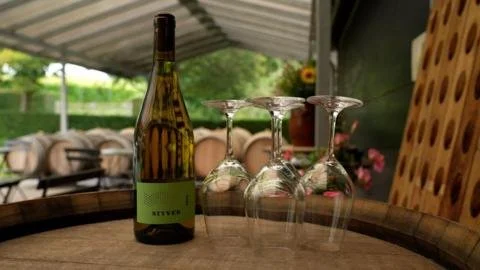Emerging Wine Industry in Scandinavia: A Cold Climate's New Frontier
Emerging Wine Industry in Scandinavia: A Cold Climate’s New Frontier
Sipping a glass of local wine is not the first thought that comes to mind for many when considering a visit to Scandinavia. However, the colder northern region is becoming a burgeoning wine-making frontier. Hundreds of commercial vineyards have sprouted in Denmark, Sweden, and Norway, marking a transition from a niche hobby to a growing industry.
The Rise of Scandinavian Vineyards
On Zealand, Denmark’s largest island, over 10,000 vines flourish on a hillside. Nina Fink, owner of Vejrhøj Vingård, notes that many have discovered the feasibility of growing wine in Denmark, leading newcomers to enter the market consistently.
Nina and her husband Niels founded Vejrhøj Vingård 13 years ago after stepping away from their corporate careers. They primarily cultivate green grape varieties, producing floral white wines, rosé, and sparkling wines. The Finks emphasize the advantage of longer summer days with more sunlight, giving them different growing conditions than those in traditional wine regions like France or Italy.
Grape Varieties and Production
Solaris is the grape variety of choice for many Scandinavian vineyards. This aromatic, hybrid grape, bred in Germany in 1975, thrives in colder climates and is resistant to diseases, reducing the need for pesticides. Danish winemaker Niels Fink shares that initial production started with 4,000 bottles, but sales have expanded to 20,000, feeding into top restaurants like Michelin-starred Geranium.
Commercial vineyards in Denmark have only been permitted since 2000, leading to a significant increase in wine production around 2010. Jean Becker of the Danish Wine Association notes that the number of commercial wineries in Denmark has surged to 150, covering 125 hectares, alongside more than 1,000 hobbyists.
In Sweden, 47 commercial wineries span 193 hectares, with the largest containing 125,000 vines. Becker mentions that new entrants are starting with larger scales, often beginning with 15,000 to 25,000 vines.
Climate Impact and Challenges
Winemaking in Scandinavia faces significant challenges, primarily related to climate. While historians attribute the rise to better weather patterns attributed to climate change, experts like Prof. Torben Bo Toldam-Andersen emphasize that the advent of hardier grape varieties is a driving force for success. He leads the “FastGrapes” program, which tests and selects grape varieties suited for the northern climate, considering factors such as ripening speed and pest resistance.
Denmark and Sweden have experienced an average temperature rise of nearly two degrees Celsius over the past 40-50 years, leading to milder winters and an extended growing season, though frost damage remains a concern. Producing wine in this new environment requires a learning curve as winemakers adapt to their unique conditions.
Labor and Economic Constraints
The burgeoning wine industry must navigate this evolving landscape despite high labor costs and strict regulations on chemical treatments in the vineyards. The labor market also presents a challenge as winemakers struggle to find trained workers, prompting reliance on training programs or foreign labor. Romain Chichery from Thora Vineyard conveys the challenges of starting in a country with a nascent wine industry but also the enthusiasm for experimentation and innovation.
However, the Danish wine market remains small compared to established European countries like France or Spain, with home-grown wines being relatively expensive. A bottle of Danish wine typically costs from 200 kroner ($27; £22) and upwards, often more than double the cost of imported wines.
Market Reception and Future Outlook
Despite the high prices and current market position, Danish wines are beginning to make an impression internationally. Nicolai Christiansen, a Copenhagen wine shop owner, reports selling Danish wines to bar owners in France, suggesting a layer of growing appreciation. Still, he remains skeptical about the quality and pricing compared to established regions.
In conclusion, the Scandinavian wine industry is carving its niche within the global market. While still in its infancy, with considerable potential for development and growth, the blend of idealistic entrepreneurship and the challenges of climate and cost position this emergent sector as a fascinating area of exploration for wine enthusiasts.

